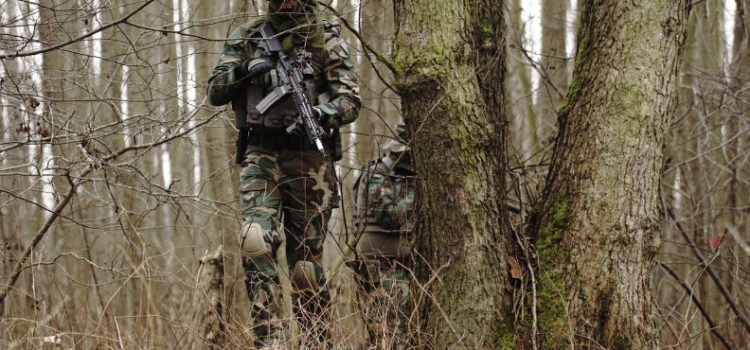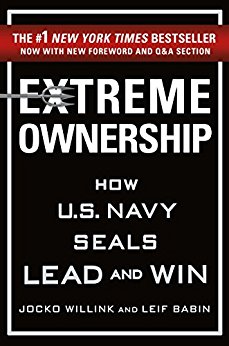

This article is an excerpt from the Shortform summary of "Extreme Ownership" by Jocko Willink and Leif Babin. Shortform has the world's best summaries of books you should be reading.
Like this article? Sign up for a free trial here .
Part of a leader’s responsibility is to lead her team courageously and decisively, no matter what stress and confusion is happening around her; presumably, this is part of the reason she has earned her position as the head of the team. Sometimes, a leader will only have limited information available to make a critical decision, and in these cases she must be comfortable making the best decision possible with what she has.
At times an educated guess will be the best option available, and this is when a leader’s knowledge and experience is especially critical to compensate for missing information. But leaders or not, there are times in life when we all must make decisions based on an incomplete picture — for example, in healthcare decisions when you know only the likelihood of a risk but not its certainty, or in deciding whether to evacuate before a forecasted severe storm.
Leaders can’t afford to waste time with too much deliberation, waiting on further research or hoping to reach the absolute right solution. They need to be able to make decisions quickly, and to adapt those decisions just as quickly if new information or circumstances arise.
Additionally, it’s important that a leader be decisive to reinforce her team’s confidence in her ability to lead. If a leader appears indecisive or unconfident, that her employees are more likely to start questioning her competence. Leaders must be decisive amid uncertainty.
Battle Story of Decisiveness amid Uncertainty: When You Don’t Have All the Facts, Rely on Logic and Not Emotion
Babin is leading a team of SEALs on a Seize, Clear, Hold, Build mission with U.S. Army and Marine Corps battalions. Babin’s team comes into the enemy-held neighborhood early in the morning and the SEAL snipers set up an overwatch position to cover the U.S. Army troops that are coming to create a new combat outpost.
After the soldiers move into the area, a SEAL sniper named Chris Kyle (who went on to write the bestselling book American Sniper that later inspired the Hollywood movie) alerts Babin that he’s just seen a dark figure in the window of another building, and he’s unsure whether to take the shot. Normally, if Kyle can positively identify an enemy — if he has no doubt that the person he sees through his scope is an insurgent — then he can take the shot without asking permission. If the target is an enemy sniper, it’s even more urgent he shoots before the enemy has a chance to harm a U.S. soldier or SEAL.
U.S. Soldiers are clearing buildings in the same area, so both Kyle and Babin are apprehensive about shooting in case the target turns out to be part of U.S. forces. Babin radios the U.S. Army commander to confirm none of his men are in the building where the target was spotted (all the American forces in Ramadi operate on the same map, which labels each building with a number). The commander confirms his soldiers are not in the building, and urges Kyle to take the shot; the commander feels certain the target must be an enemy, and doesn’t want to allow any time for an enemy sniper to hurt any U.S. troops.
Kyle gets another glimpse of the target in the window before he disappears again, but he’s still can’t positively identify him. Despite the Army commander’s urging for Kyle to shoot, Babin asks the commander to have his men clear the building where the target is located. Impatient and frustrated, the commander initially pushes back, but finally relents at Babin’s insistence; the Army soldiers are ordered to clear the building while Kyle covers them from his overwatch position.
With only limited information available — unable to positively identify the target and knowing that friendly forces are nearby — Babin has to make the best decision he can, based on logic and not emotion. Babin can’t risk authorizing Kyle to take the shot because the prospect of friendly fire is worse than the risk of missing the chance to take out an enemy sniper. He makes the decision and stands firmly by it, regardless of the Army commander’s urging. Leaders must be decisive amid uncertainty.
As soon as the commander calls for his men to clear the building, Babin sees his error: He and Kyle misidentified the building on the map. The soldiers who are heading out to clear the building with the target actually come out of the building where Kyle saw the target — meaning the man Kyle saw was a U.S. Soldier and not an enemy sniper. Despite the mistake with the map, Babin is grateful that both he and Kyle listened to their gut and didn’t succumb to pressure to shoot the target. The commander, too, is relieved that Babin didn’t give in to his pressure.
Business Application: Sometimes Your Only Choice is the Lesser of Two Evils
Babin and Willink are working with Jim, the CEO of a software company, and Darla, the CEO of a subsidiary engineering company. The CEOs are dealing with challenges, even though the software company has seen impressive growth and revenues in the five years since its launch. Their primary issue is that competitors are trying to recruit their top talent, namely the five senior engineers; if the engineers leave, their teams could leave with them, and that would jeopardize the company’s future.
What’s more, the senior engineers have created a culture of being competitive — rather than collaborative — and even trying to outperform each other. Two senior engineers in particular, Eduardo and Nigel, often bicker and blame each other for problems on their own projects. Darla has tried to resolve the issue, but nothing has worked and Eduardo’s and Nigel’s hostility has become detrimental to the entire team.
Eduardo and Nigel each insist that the other should be fired because they can no longer work together. Darla and Jim are both at a loss. Darla feels that losing either Eduardo or Nigel would hurt the company, and carries the risk of also losing some key people from their teams; losing both, she says, would be disastrous.
Darla thinks it over and concludes that she wants to let the situation play out; she doesn’t know who, if anyone, to believe. However, Babin points out that a leader needs to be proactive and make decisions, rather than letting a situation dictate decisions. Babin asks Darla to think through what will likely happen if she lets things play out. Darla predicts that if she keeps both Eduardo and Nigel, one will end up leaving out of discontent; he will quickly get a job offer from a competitor, and will likely take a few talented team members with him.
The alternative is to fire one of the senior engineers, but Darla can’t decide which one because she doesn’t know who to believe…

———End of Preview———
Like what you just read? Read the rest of the world's best summary of "Extreme Ownership" at Shortform . Learn the book's critical concepts in 20 minutes or less .
Here's what you'll find in our full Extreme Ownership summary :
- What Extreme Ownership means, and why every responsible leader needs to get it
- How to get your team working smoothly together
- How leadership principles from Navy SEAL teams work in everyday business and life






